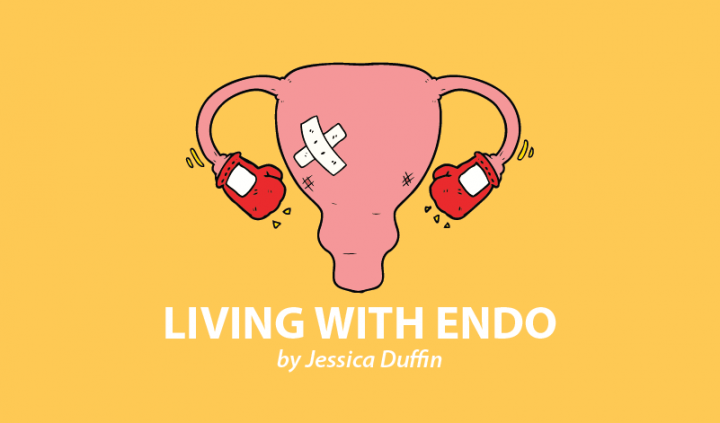You may have noticed that people’s shopping habits have gotten a little … intense recently. Maybe you’ve struggled to find toilet paper, hand sanitizer, or dried goods like beans and rice.
I appreciate that in some places, finding certain foods is almost impossible. But I also think we need to acknowledge the difference between being able to find certain foods and not buying the healthy foods that remain because we’re not used to cooking with them.
If that’s where you’re at, please know that I understand — things are tough right now. I won’t preach to you.
At the same time, I’m an endometriosis health coach and want to encourage behaviors that will help if you’re suffering. If you’re like the countless other endo patients I’ve spoken with since this pandemic kicked off, you’re flaring up and don’t know how to pull together anti-inflammatory meals with what you’ve got.
Following are my tips for eating an anti-inflammatory diet, even during the COVID-19 crisis.
The basics of an anti-inflammatory diet
Many diets, from paleo to vegan, can be anti-inflammatory. The key themes that connect them are lots and lots of veggies, plant foods, healthy proteins, healthy fats, and whole grains (in some cases).
When thinking about eating an anti-inflammatory diet, lead with vegetables, especially non-starchy ones like leafy greens, asparagus, peas, and green beans, among others.
Aim for color, too, as the more color, the more antioxidants, which lowers inflammation. Think about mixing your colors up, such as enjoying strawberries, yellow bell peppers, carrots, red cabbage, spinach, or parsnips.
Perhaps the area where you live is low on fresh vegetables, but you can find even a few differently colored veggies. Even two or three varying colors a day is better than none at all.
Focus on healthy fats like olive oil and wild caught fatty fish such as salmon and mackerel. One thing I notice every time I go to the supermarket is how much fish is still on the shelves.
Aim for lean protein, ideally organic if you can get it, and don’t forget that plant foods such as rice, quinoa, beans, legumes, nuts, and seeds provide protein, too. If you’re vegan, you could also try a pea-based protein powder, which you can order online.
For some of us, whole grains can be inflammatory, so find some that suit you, if any. Don’t forget that rice isn’t the only whole grain out there. There’s also buckwheat, teff, amaranth, quinoa, and millet.
The basics of a blood sugar balancing diet
Unstable blood sugar levels can lead to estrogen dominance and inflammation. To create a blood sugar balancing meal, you need fiber (from non-starchy veggies), healthy fats, protein, and complex carbohydrates.
In my training at The Integrative Women’s Health Institute, we teach clients these ratios for a blood sugar loving plate:
- 50 percent vegetable/fruit
- 25 percent protein
- 25 percent split between complex carbs and good fats
I love this diagram by nutritional therapist Amelia Freer about building a healthy plate, and you can listen to one of my podcast episodes to learn more.
Foods to focus on
Certain foods are even more beneficial to those of us with endometriosis, so keep an eye out for them while shopping.
Herbs and spices are incredibly anti-inflammatory, and at The Women’s Integrative Health Institute, we suggest using them as much as possible. Ginger, turmeric, and cinnamon are particularly effective.
Berries, which are low-sugar fruits, are also high in antioxidants, so they’re powerful for reducing inflammation and avoiding blood sugar spikes.
If you can’t find them fresh, look for frozen or even powdered ones. Don’t be scared to try berries you’re not used to or that you don’t love. I usually use blueberries and blackberries, but could only find black currants, so I’ve frozen them and whip them up into smoothies. I also know quite a few people who don’t love the texture of raspberries, but you can put those in a smoothie, too, or throw them into oatmeal while it’s warming up.
Cruciferous vegetables are wonderful for supporting healthy estrogen metabolism, so trying to find even one cruciferous vegetable is better than none at all.
Cruciferous veggies include kale, cabbage, cauliflower, broccoli, chard, and other leafy greens. If you don’t know how to cook with them, take to Pinterest. Or get creative: You could turn your cauliflower into buffalo cauliflower bites, blend into a mac and cheese sauce, or freeze it and add it to smoothies.
***
Note: Endometriosis News is strictly a news and information website about the disease. It does not provide medical advice, diagnosis, or treatment. This content is not intended to be a substitute for professional medical advice, diagnosis, or treatment. Always seek the advice of your physician or other qualified health provider with any questions you may have regarding a medical condition. Never disregard professional medical advice or delay in seeking it because of something you have read on this website. The opinions expressed in this column are not those of Endometriosis News or its parent company, BioNews Services, and are intended to spark discussion about issues pertaining to endometriosis.

